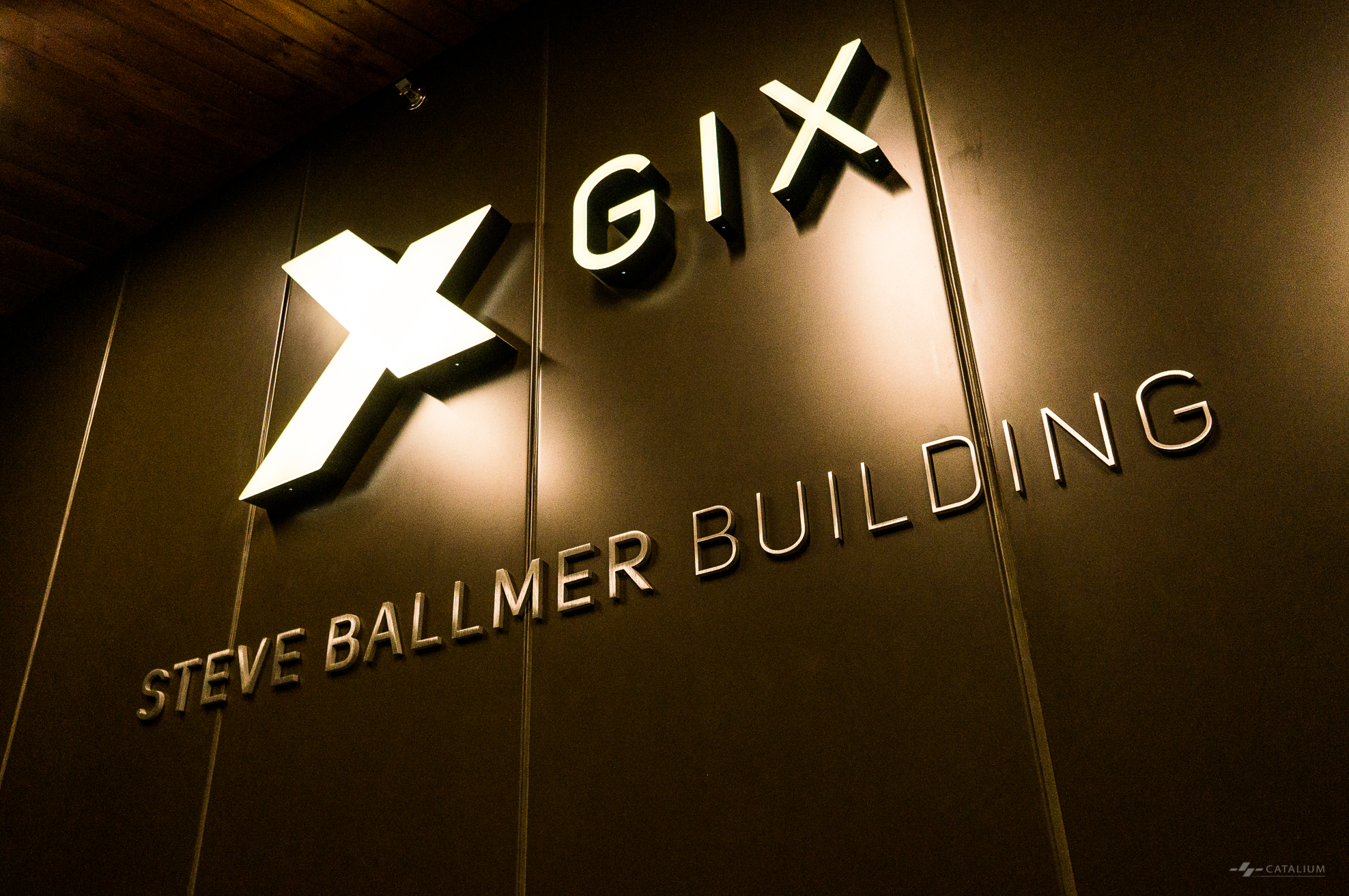Why I Write This?
December 14th, 2018 was my last day on enrollment at the University of Washington’s Global Innovation eXchange Institute (GIX). I graduated from there with a Master of Science in Technology Innovation degree.
There have been some requests from grad school applicants asking me for first-hand information on the study experience at GIX. To make the information accessible for more people, I am writing this post to share my observation and reflections on the journey.
Who Am I?
To better understand my perspective, you need to know more about my background. Before coming to GIX, I had spent five years in the industry—two years at a Beijing-based startup as Product Manager and experience designer, three years as a User Experience Designer at consultancies. I have a B.Eng. in Industrial Design degree. I learned how to code in Python and develop web layout with HTML/CSS by myself before coming to GIX. To know more about me, please check my LinkedIn.
Things You Need to Know
There are two tracks at GIX so far, MSTI and Dual-Degree. Dual-Degree has components from both UW (MSTI) and Tsinghua University (MEDSIT). Dual-Degree students share the MSTI track with MSTI-only students; in addition, they need to spend half a year at Tsinghua in Beijing for further study and research. Although the MSTI part is shared, Dual-Degree students need to do some research work even while on the MSTI track. So the experience of the Dual-Degree student could be slightly different from MSTI-only students. I was an MSTI-only student, so what I share here solely applies to the MSTI-only track.
Please be advised that what I write here are subjective, other cohort students might agree or disagree with my comments. I encourage you to reach out to past graduates who have a similar background with you for feedback which would align with your track. The program is evolving, we the first cohorts have given significant feedbacks to GIX for iterations. For instance, the sequence of the course for Cohort 2 is different from ours. It is a living program, everything is going better and better.
About the Courses
The official introduction of the course can be found here in the “Coursework Overview” section: https://gixnetwork.org/program/msti/. Below are my personal comments.
Fall 2017: September 27th–December 15th, 2017
510 A: Programming for Digital & Physical User Interfaces
Credits: 4
This course mainly covered web development: coding in HTML/CSS/JS, streaming data from sensors on mobile devices, the application of APIs. In the second half of the course, we coded in Python and tried the use of Python libraries like NumPy and OpenCV.
I didn’t have a computer science background. In the beginning, everything seemed comfortable (programming for layouts), but the complexity grew exponentially when JavaScript was brought in. There were many new concepts to understand, Mozilla MDN became my most-visited site at that time. I especially like the Python part, not because I was better at it, but I realized I could fulfill large-scale data manipulation and computing for abstract concepts.
In general, this course was a starter for the CS component of the MSTI program. People who have no coding experience might find it intimidating, while cohorts with a CS degree might find it too easy. The faculty realized that and adjusted timely. Those who have stronger programming skills could choose to work on individual/team projects, which should be technically challenging enough.
520 A: Design Thinking for Technology Innovation
Credits: 2
520 A was a high-level methodology class. It taught us core concepts of Design Thinking and the approach to conduct research such as how to frame problems, how to plan primary research. In this course, the BXT model was introduced. That model became the cornerstone for the rest of the program for us to analyze projects.
520 A helped me establish a framework system to engage a project.
521 A: Design Thinking Studio
Credits: 3
521 A coupled with 520 A in Fall 2017 as a practicing session for students to implement methodologies we learned in 520 A. We worked in teams to tackle real-world issues. My team worked on natural hazard damage prevention for the Greater Seattle Area. Each team studied the challenge and proposed solutions with consideration of the BXT model.
The Design Thinking Studio was the first team project of the entire program. As the cohort students have a significantly different culture, knowledge and work backgrounds. The work habit and expectation were diverse as well. As a consequence, several teams had unhappy experience during the project. It was a valuable lesson for all. My takeaway would be: communicate as early and as much as possible; please fully engage in the project and respect others’ time.
530: Essentials for Entrepreneurship
Credits: 3
530 A: Essentials for Entrepreneurship-Business Strategy Fundamentals
530 A emphasized on the Business Strategy — How to identify ways in which a firm can sustain profitability in the face of competition. Michael E. Porter’s strategy theory and business cases from Harvard Business School (HBS) were the materials we used for the class. The instructor, David Tan, was one of the favorite instructors for many of us. The lectures were organized very efficiently. The half-lecture-half-seminar way of teaching made his teaching very engaging and intelligent-challenging. He spoke very quickly (and clearly), we need to focus with full attention to keep in pace with him.
The key takeaway for me was the systematic approach to form a product strategy. There were some a-ha moments when I read the course materials. Before attending the class, when I explored the product features for the Niu app or client companies of EICO, the approach my colleague and I took was mostly from the User Experience side. After the 530 A, I found the hidden path to making product strategies and long-term product plan.
530 B: Essentials for Entrepreneurship-Entrepreneurship Management
530 B followed 530 A, it covered the evaluation of a business opportunity, business model economics & metrics and essentials of venture finance. Like 530 A, 530 B was built on theoretical bases and HBS cases. The instructor of the course, Ben Hallen has Bachelor’s and Master’s degrees in EE/CS, and a Ph.D. from Stanford’s Technology Venture Program. He had first-hand startup experience before teaching at UW. Many of the cases we studied turned out to be his connections’, this enabled us to know near-first-hand stories inside the ventures. In one class, we studied the Klaviyo case — how to bootstrap a SaaS company. In the end, we got to know the co-founder of Klaviyo, Ed Hallen, was Ben’s brother! Ben skyped Ed to let us ask questions about his venture. That was amazing.
530 B showed us how starting a new business would look like. It introduced us the toolset for doing a startup and things to consider when making a decision.
Winter 2018: January 3rd–March 16th, 2018
Sr. Research Engineer John Raiti at UW College of Engineering created the triangulated course structure for the winter quarter, which consisted of 512, 513, 514. In brief, 512 should teach us about sensors and circuits; 513 should teach us data management and signal processing, and 514 was where knowledge we learned from 512 and 513 came together to make something real.
512 A: Introduction to Sensors & Circuits
Credits: 3
Before the class began, many of us thought 512 should be a series of lectures on sensors and circuits, as the name had indicated. Later we found it was in another format — seminar-like journal paper reviews and guest lectures. I personally enjoyed it pretty much. I didn’t have much knowledge base on sensors and circuits (my study on electrics/electronics in middle school and college was solid tho,) reading 3–5 journal papers per week let me quickly have a sense of how to utilize different kinds of physical/chemical/biological properties to form analog signal sensing apparatus and gain data from them. The guest lecture series were mainly on real-world sensor applications. For example, Associate Professor Yongqiang Lyu from Tsinghua University introduced basics in bio-sensing, which is the foundation for HCI (Human-Computer Interaction) studies and healthcare products. It helped me to gain a technical view of the healthcare product category.
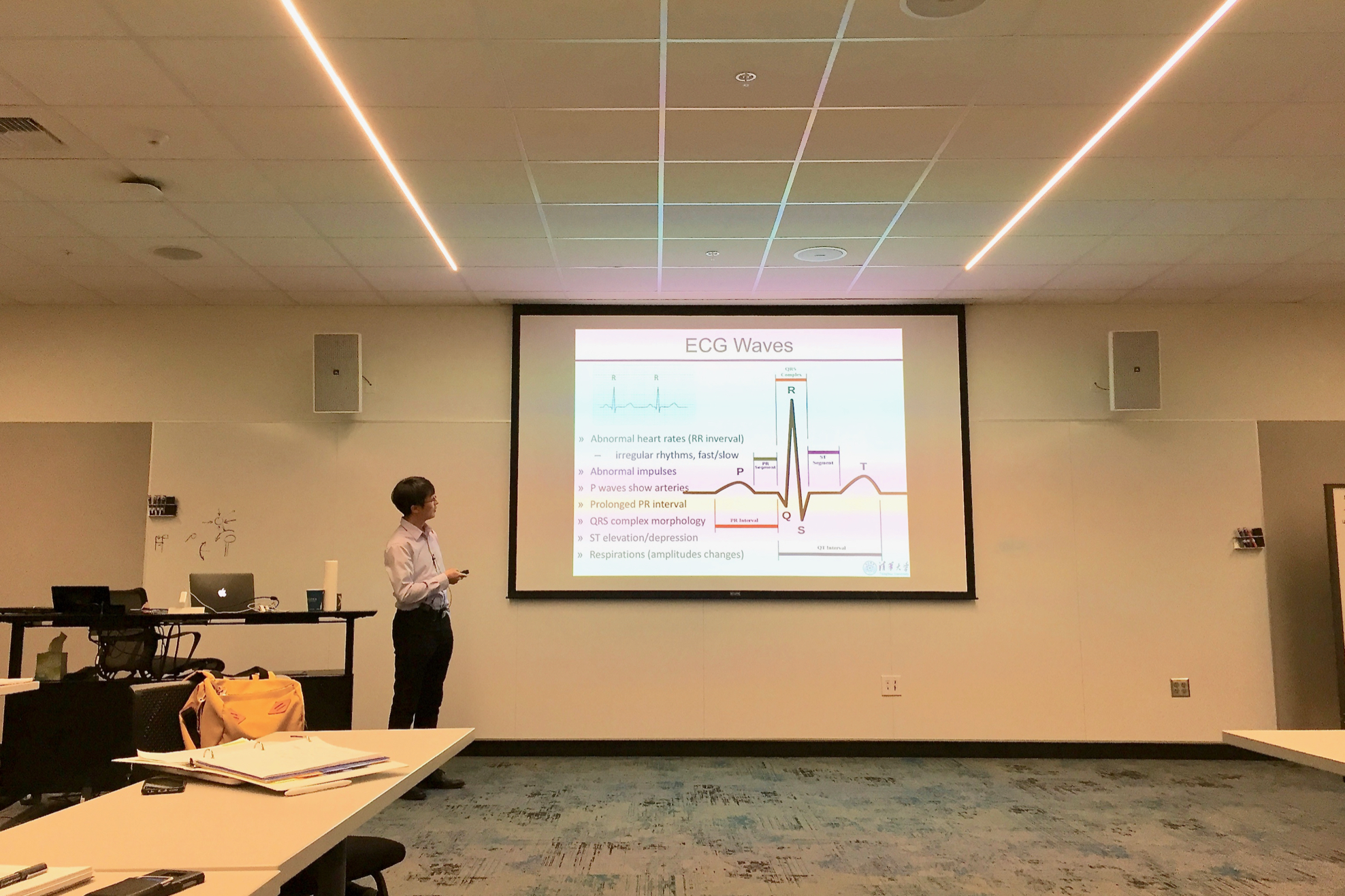
513 A: Managing Data And Signal Processing
Credits: 3
In the winter quarter of 2018, 513 A was actually “Introduction to Deep Learning.” The course covered regression, KNN, neural networks, convolutional networks, LSTMs, generative networks, and reinforcement learning. It was intelligence-stimulating. Through the course, I got to know what were the engineering challenges for a seemingly “simple” product requirement.
I was aware that I might not be an ML developer. So my focus was more on knowing the capabilities of ML and the requirements for training datasets. These would one day assist me design Machine Learning-based products.
514 A: Hardware/Software Lab-1
Credits: 4
514 A or Lab-1 was the first major team-based project that required us actually to build something. Each of us needed to pitch for a concept that contained data collection and ML components. Then the faculty group would narrow down the proposals to a list of project, each project housed 3–4 students.
Lab-1 was challenging for both students and faculties. I have identified two pitfalls that you might need to watch out: 1. Spending too much time choosing the concept/topic. It was a widespread problem, some teams lost 1–4 weeks out of the total 9 weeks in that quarter just because the team or individuals could not settle down on one concept. They over-thought about it. It was only a training session, not a life-changing real startup project. Making progress and learn through the Lab was what should be taken care of. 2. Lack of professionalism. Unlike professional settings in a company, there were no hierarchy working rules in the school. Some people might not show up for reasons. Not handling this problem appropriately might wreck the project. My advice would be: having in-group meetings once the team is curated, the meetings should serve three purposes: a. Get to know each other, in depth; b. Communicate the expectations for the Lab project; c. Compile the Code of Conduct for the team.
Lab-1 & 2 are like mini-Launch Projects, they are precious opportunities for everyone at GIX to learn how to manage scope and build something meaningful. They can hone your hard/soft skills to get ready for the final Launch Project.
522 A: The History & Future of Technology
Credits: 2
522 A was my favorite at the MSTI program. It was one of the courses supported by the Department of Human-Centered Design and Engineering (HCDE) of UW, taught by Prof. David Ribes. By studying cases that showed the impact of technology on society in the past, we learned how technology might interact with society. The core concepts for the class were Sociotechnical, Opening the Black Box and Content & Context. In the nine weeks course period, we read books/papers/reports and turned in a reading response every week. The materials we studied covered a wide range of artifacts — infrastructure, keyboard, Internet protocols, algorithms, assistive technology, Inclusive Design by Microsoft, wearable technology, big data, and of course AI.
There was one inspiring reading material left me a deep impression — Nudge, by Richard H. Thaler and Cass R. Sunstein. In 2017, Thaler was awarded Nobel Memorial Prize in Economic Sciences for his work in behavioral economics, Sunstein served the Obama Administration at White House Office of Information and Regulatory Affairs. Through the book, I got to know how the creators of policies or products could influence the target group’s decision-making without directly banning them from choosing another option. The nudge strategy has ethic risks though, I can see how it would empower product design and operation if it’s properly used.
We were required to submit a write-up as the final assignment, here is what I wrote: Alexa, Who Are You — A Brief History of Amazon’s Voice Assistant and Beyond.
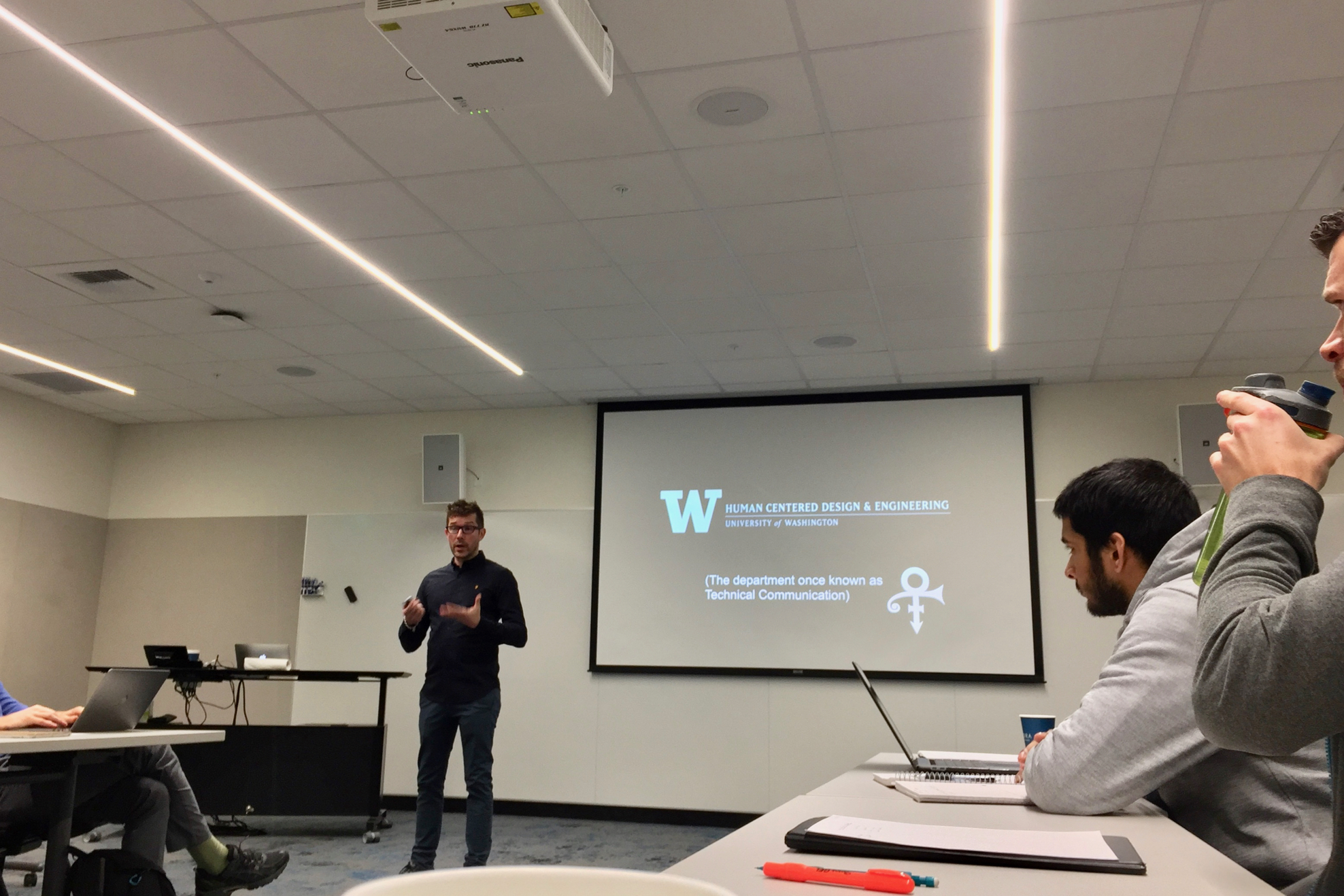
Spring 2018: March 26th–June 8th, 2018
Spring 2018 was quite an effort-demanding quarter. 511, 515 and 523 all had a considerable amount of assignments every week. Actually, like all design assignments, there would never be an ending if you pursue an “even better” deliverable. To balance the workload and let students learn fabrication techniques earlier so they can do a better job in Lab-1, GIX has moved 511 A to the first quarter.
511 A: Fabrication & Physical Prototyping
Credits: 3
511 A was about how to fabricate and prototype. By studying products’ structure and manufacture techniques, and building our own designs in different fidelities with various tools, we learned which fabrication method to choose for different prototyping stages. After spending more than 100 hours in the Maker Space, I am experienced with laser cutting, 3D printing. I know the capabilities and limits of mainstream rapid prototyping machines — and how to tune the fine details of the design to cope with that.
A lesson I learned from one of the assignments was to check the design thoroughly with lower-fidelity efforts before deploying the model to machines. I designed a mechanical structure named “Applaubot” from scratch, the 49-component complex failed to work because I did not check the shaft structure.
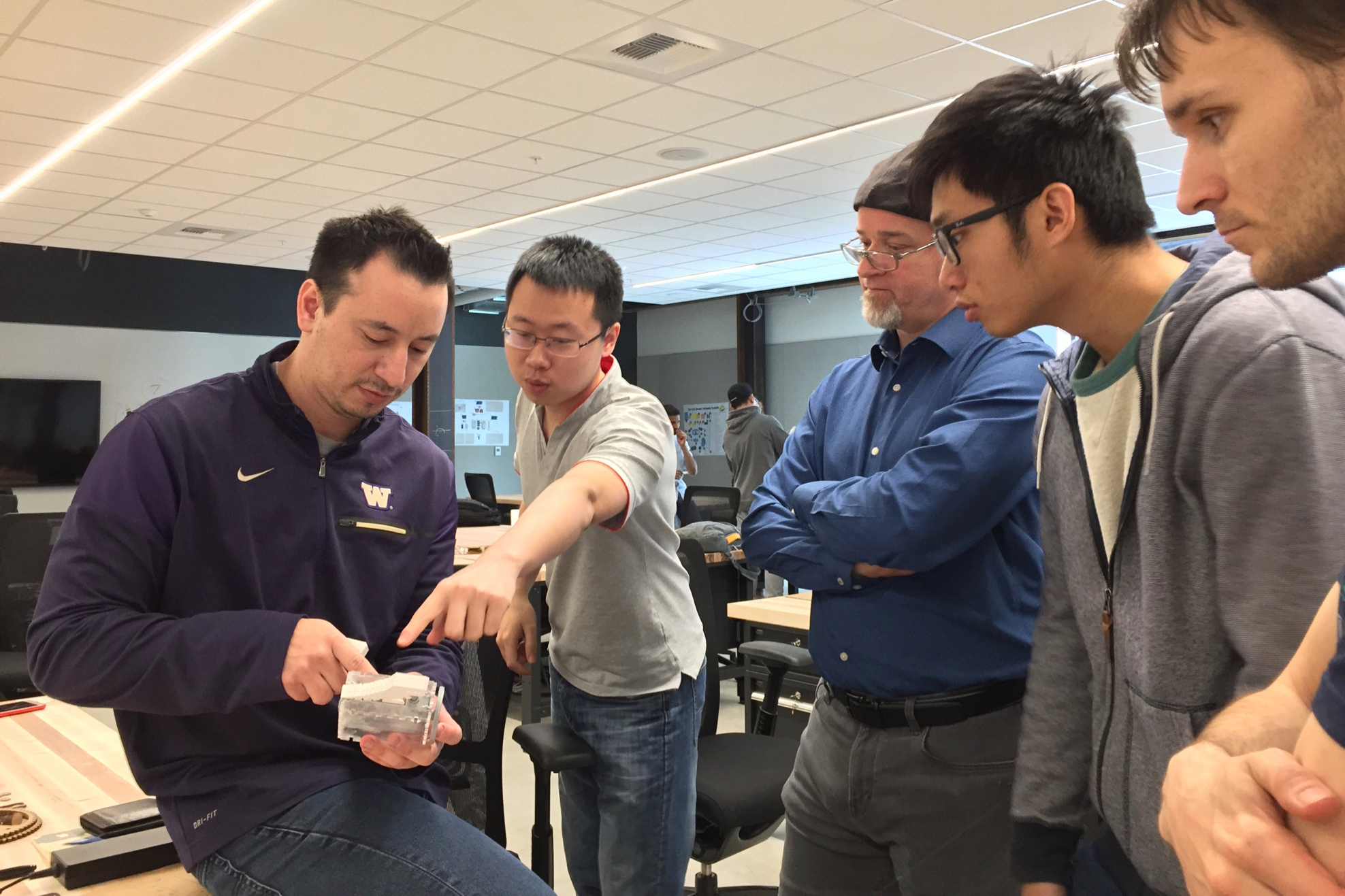
515 A: Hardware/Software Lab-2
Credits: 4
Lab-2 was the most satisfying team project at GIX for me. We could privately pitch ideas to other students and form teams. The instructors were from Microsoft Research Medical Device Group. They mentored us not only about engineering but also the economics of the potential commercialization of our projects.
By the end of the project, I invented a method to detect tension within the fishing string and give feedback for the fisher. I was lucky to have two professional teammates to execute the plan we made flawlessly.
Our team submitted an eight-page Final Project Write-up document for dynaTac, which shared lots of details on what challenges we had faced and how we made decisions to solve them creatively. You would have the opportunity to read that document if you get admitted to the program 😉
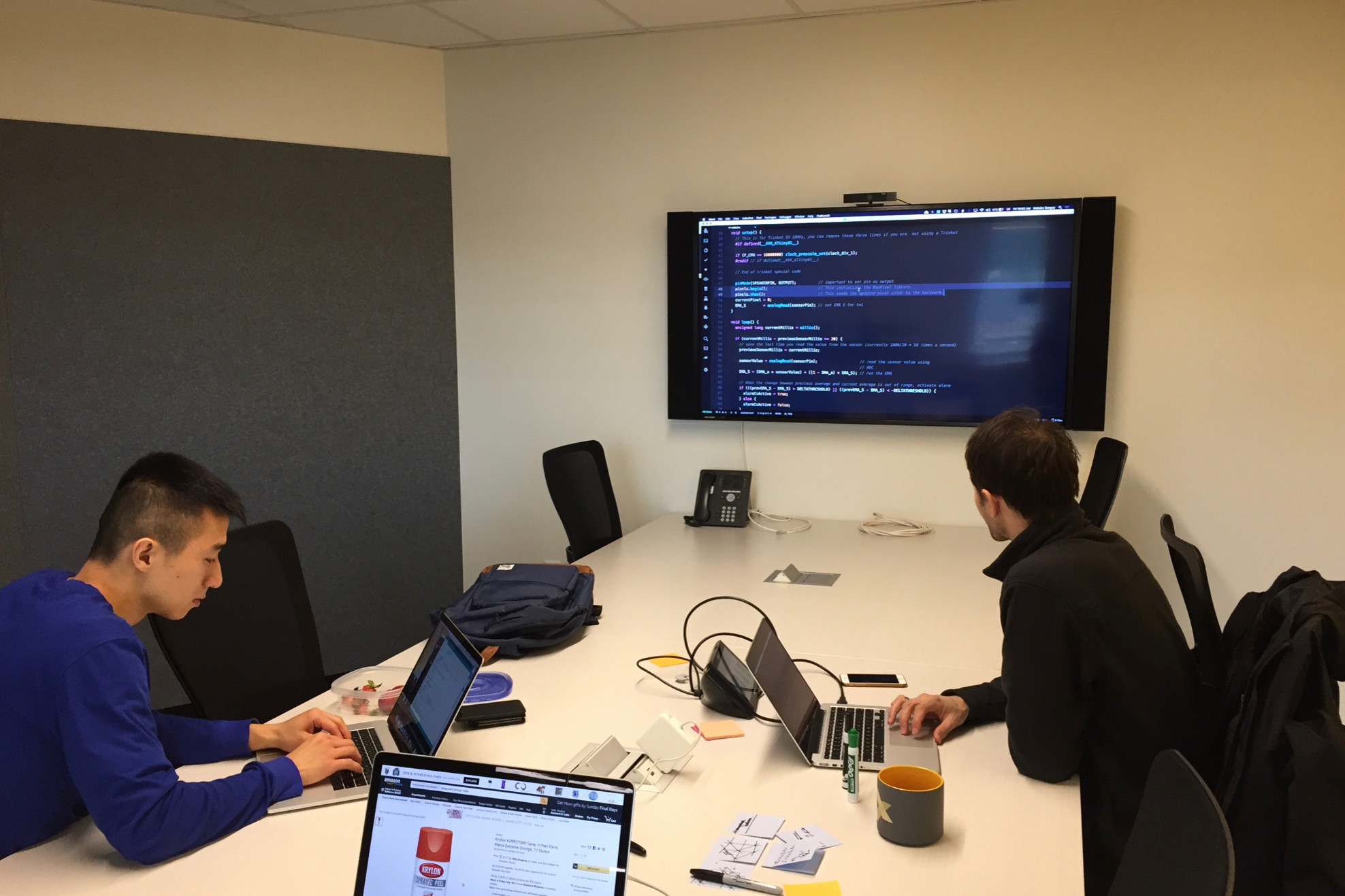
Here is a blog post I wrote about the project: https://catalium.net/dynatac/.
523: User Research & Evaluation Studio
Credits: 3
523 taught us user research methods and how to select appropriate research tools for specific research questions. Each week, we would study a set of research methods, and the assignment for that week required us to apply what we had learned during that week. Eventually, we went through 50 research methods/techniques.
What made me like this course was it helped me to build a framework for user research projects. Although I did some user research works in previous jobs, this course greatly enlarged my toolbox. One suggestion I have for future cohort would be: try to merge some of the tasks/assignments of 523 with Lab-2 in the early stage. The insights you gain from user research sessions can help you better define the scope of the Lab project.
532 A: Introduction to Finance and Accounting for Entrepreneurs
Credits: 2
532 A was another course provided by UW Foster School of Business, the instructor, Diane Legg was former CFO of Coinstar. She led us through Financial Fundamentals like the role of accounting/finance in business, financial tools, GAAP (Generally Accepted Accounting Principles (of the US)) concepts and how to apply these tools to review the performance of a corporation, forecast the future, evaluate a venture and so on.
Viewing the business from a non-technology perspective is interesting. I have learned the basics of how to interpret the Financial Statements and make operation or investment decisions basing on facts. And those skills will not only help me on corporate matters at some point but also personal finance decision-making.

In the Spring Quarter, faculty at GIX organized a series of workshops with Consortium members (Microsoft, Boeing, T-Mobile, Baidu, AT&T, arm, Nintendo) to explore the problem space that the capstone projects (Launch Project) could be themed. By the end of the Spring quarter, there had been a list of Launch Projects for us to apply. Each student submitted a prioritized list of projects and a personal statement. I was lucky, they selected me to work on the Microsoft IoT kit.
Summer 2018: June 18th–August 17th, 2018
524: Visual, Industrial and Interaction Studio
Credits: 3
524 was an introductory studio class for design disciplines. Instructors were from UW School of Art + Art History + Design and HCDE. Which covered visual/communication design, industrial design, and interaction design. The majority of our cohort group came with a computer science or robotics background, 524 provided them an opportunity to rapidly know what design could do in the development of a product process and learn the fundamentals of the design discipline.
For me, it offered me a window to know what are the basic theories and methodology framework in design. When I studied industrial design in college, it was mainly about techniques and practical methods. The lack of basic theories and methodology framework somehow limited my possibility in design.
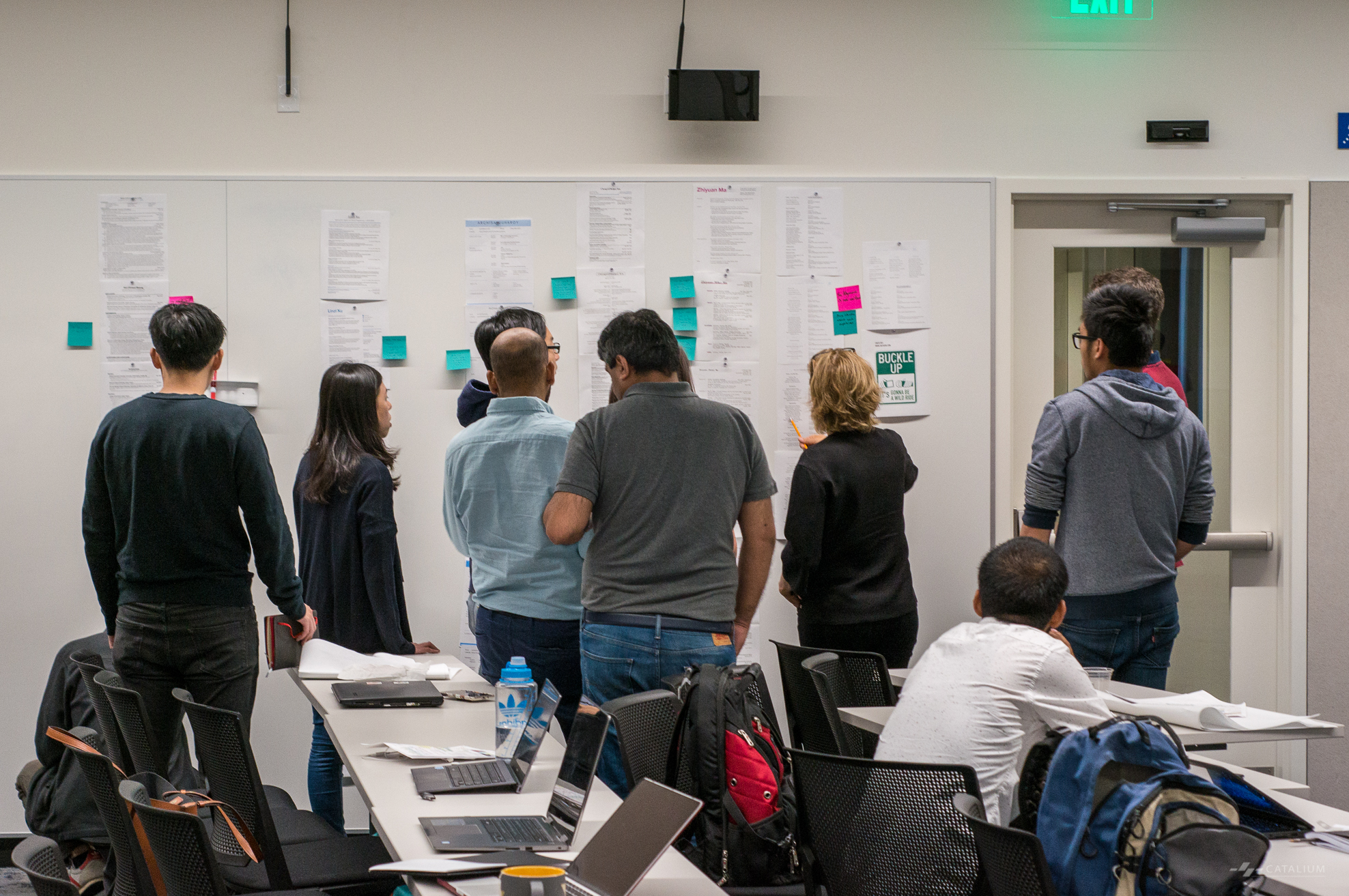
531: Planning and Managing Hardware/Software Development
Credits: 2
531 was very useful for who want to be a product/program/project manager. It covered both software and hardware development management. We went through the methodologies, tools, and metrics for managing technology development teams, and how to handle requirements, design specs, architecture, risks, release, feedback, changes, quality, etc. For the hardware part, which had a lot to do with suppliers, we discussed the management of the supply chain and how to design for manufacturability. We visited a PCB factory in Renton, WA to gain a perception of how an electronic product would be made.
Although I had two years experience as a Product Manager before coming to UW, I explored the way I manage the Niu app gradually by myself. After working through 531, I learned techniques in several aspects that I could use to improve my product management ability, such as the requirement management, the risk control, stakeholder expectation management, the development schedule, and so on.
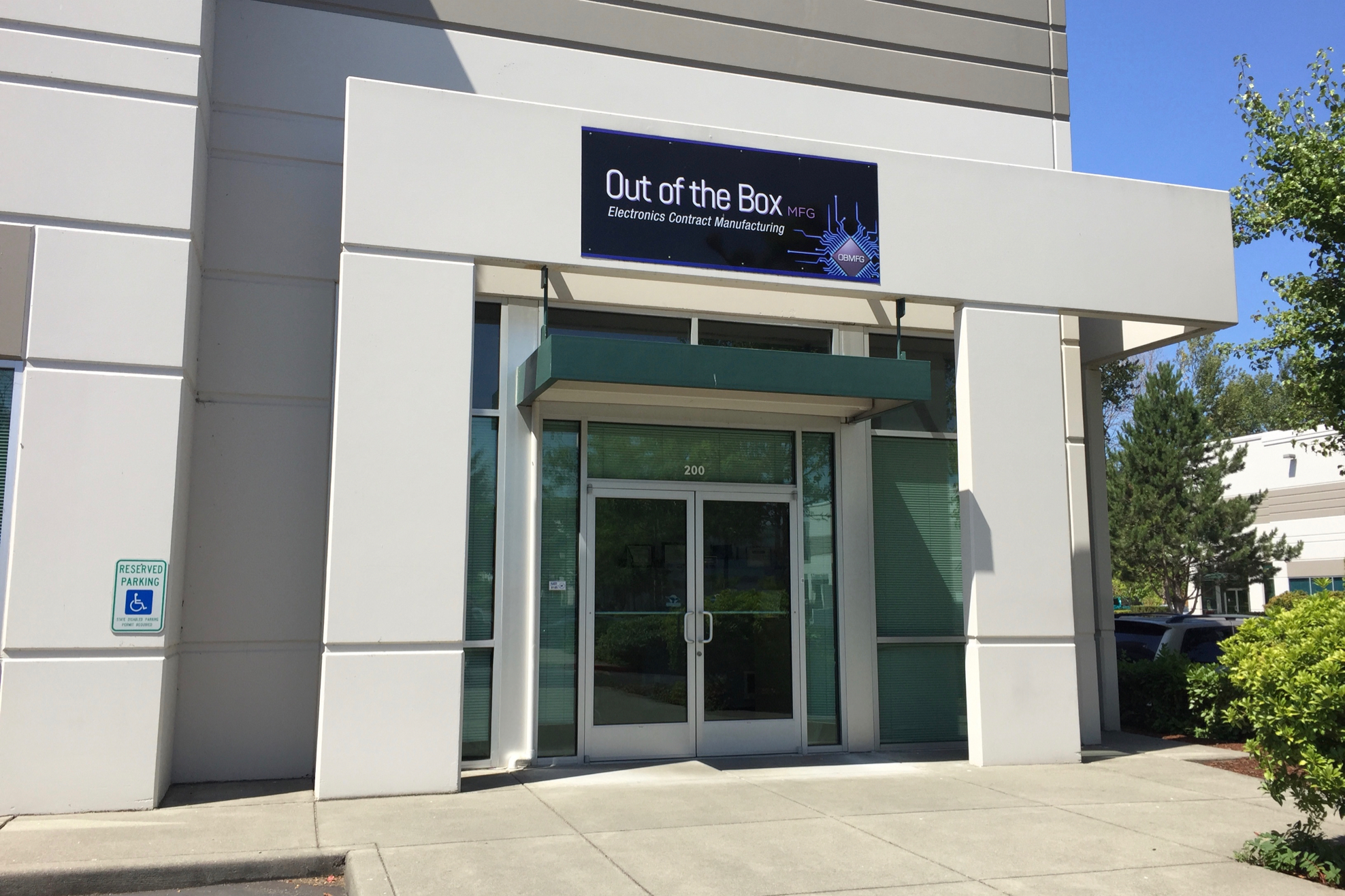
533: Corporate and IP Law
Credits: 2
533 was taught by Jesse Kindra from UW School of Law, he was also a patent attorney. The class had two components, the reading materials that covered corporate and IP law, guest lectures delivered by lawyers from major Seattle law firms like Perkins Coie, WSGR and Dorsey & Whitney, Kilpatrick Townsend.
There are different legal systems in the world, which contain many statutes and judicial precedents. The legal issue may be an intimidating component of doing business. However, after taking this class, we got to understand the corporate types and the mechanics of intellectual property protection.
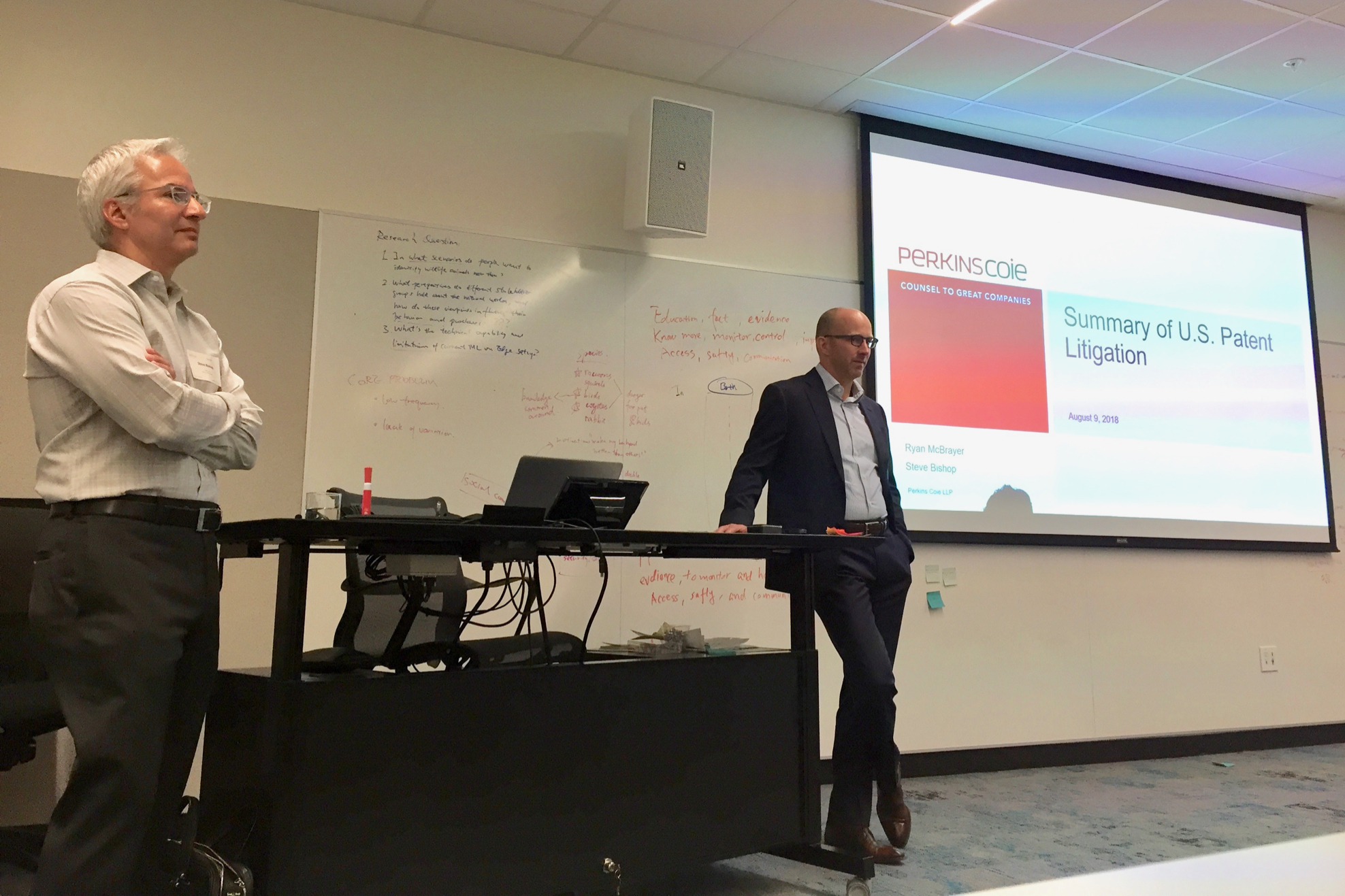
534: Building Effective Teams
Credits: 3
534 was the only credit/no credit class in the program. Gregory Bigley from UW Foster School of Business taught the class. The Technology Management MBA (TMMBA) program at Foster School also has this course. It was a workshop format class, by the time we studied concepts, Greg organized relevant in-class activities for us to understand corresponding concepts better.
Unlike other subjects such as design, engineering or business, I had never looked into theories on team management before. 534 gave me a chance to think the way people interact in a team seriously. Being a leader does not mean being the best on the tech side, but also the having ability to enable others, and eventually make the team perform better.
540: Pre-Launch Studio
Credits: 2
540 was the starting point of the GIX Integrated Launch Project. Depends on which team you work for, the goal of this studio could be different, for example, the Baidu team jumped into the engineering challenge at the very beginning because it was a fair technical project, while the Boeing team spent the whole quarter on defining the problem space. 540 consumed a considerable portion of time in the Summer Quarter.
In my opinion, the objective of the Pre-Launch Studio should be 1. Identify the problem space and reach a consensus on the expectation with the sponsor and within the team; 2. Continuously devote time for team development, this is critical to keep the team perform well; 3. Norm the teamwork contract and communication pattern with the sponsor.
Fall 2018: September 26th–December 14th, 2018
541: Launch Seminar
Credits: 2
541 was a series of seminars curated by Vikram Jandhyala, the Vice President for Innovation Strategy at the University of Washington. The seminars invited high-influence technology innovators as guests to share their research or business experience with us. We also discussed the philosophical factors behind the technology businesses.
The Seminar was an opportunity for us to hold high-level discussions on the challenges and opportunities in the world. It broadened my horizon and inspired me to have new perspectives to envision the future.
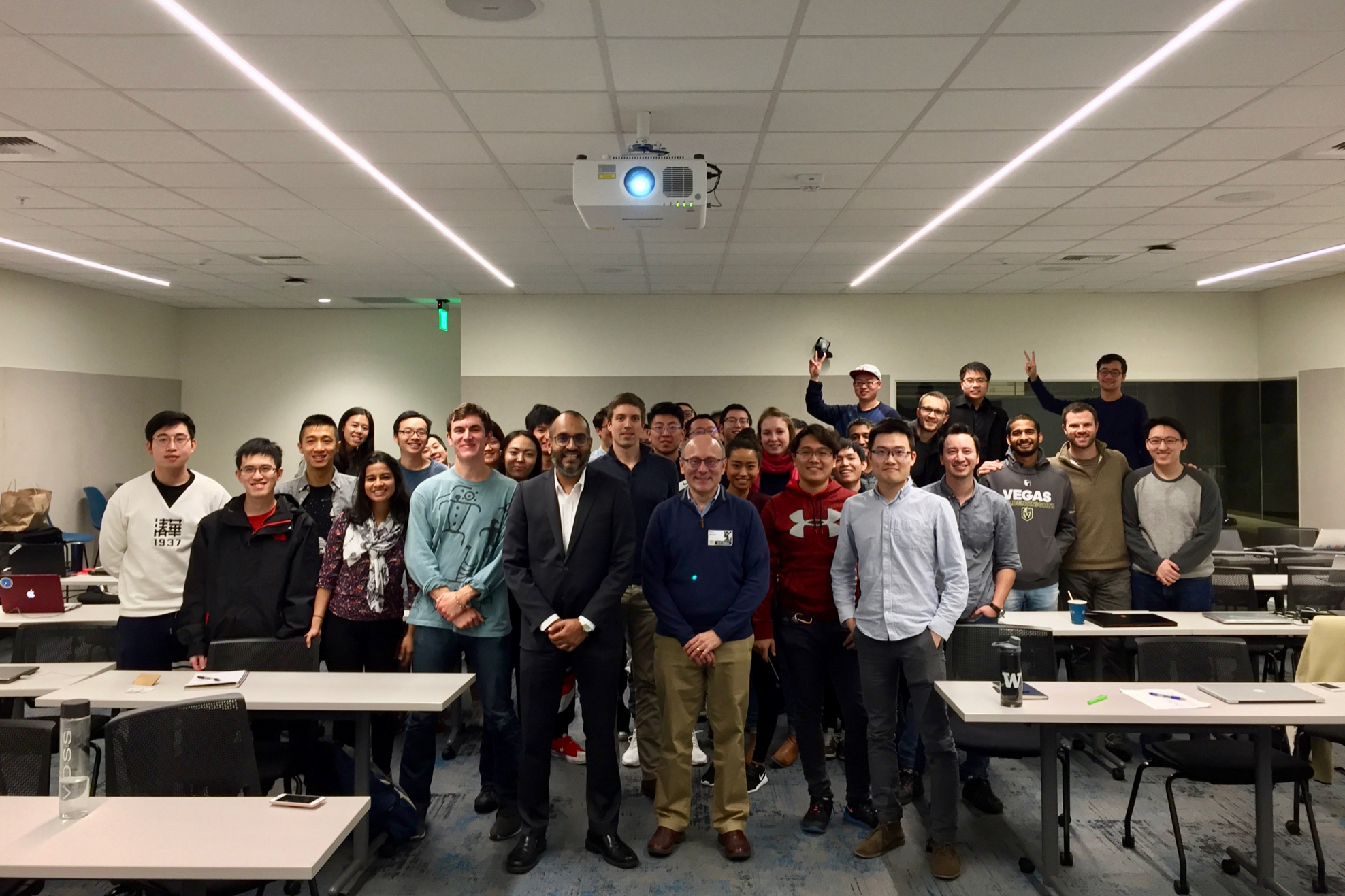
542: GIX Integrated Launch Studio
Credits: 10
542 was the place where we put what we had learned in the program together. Based on the progress we made in the Pre-Launch Studio, most teams spent 7–8 weeks in detailed design and development iterating toward the final prototype. Here is the list of 542 projects in 2018: https://www.geekwire.com/2018/microsoft-funded-u-s-china-tech-institute-gix-graduates-first-class-reveals-student-projects/.
Three other classmates and I worked on a Microsoft-sponsored project, we codenamed it as Project Diversita.
After going through all in-class components, I’d like to introduce some unique resources available at GIX.
- Interdisciplinary cohort: For our cohort, we had three primary backgrounds: CS/EE, business, design. These are pillars for a product team in a business setting. It’s a chance for anyone who want to be a product person to learn from other disciplines.
- Interaction with the industry: Seattle is one of the major tech hubs in the world. High-level execs from tech companies/NGOs (e.g., Steve Ballmer, Amit Mital, Spencer Rascoff, Kevin Johnson) and senior politicians (e.g., Gary Locke, Christine Gregoire) visit GIX regularly. Students at GIX have plenty of chance to communicate with them.
- GIX Mentorship Platform: GIX created a network of engaging mentors for the student to connect. These mentors are mainly Seattle-based engineers/venture capitalists/consultants/attorneys. These seasoned professionals are enthusiastic about mentoring us in a wide range of topics, from detailed technical questions to wisdom in life.
- Consortium group: currently there are seven Consortium members and one supporting partner (Bill & Melinda Gates Foundation). They support us not only financially, but also give us chances to work on real projects and show to the world. For instance, Team Flamingo is now in Las Vegas demonstrating their work at the CES 2019. Without Consortium member T-Mobile, this would not be possible.
- Facilities: GIX has offered us top-notch fabrication facilities in the Maker Space, and THEY ARE FREE. I know in many schools you need to pay for what you build, even at UW Fluke Hall’s CoMotion MakerSpace, 3D printings were charged per gram. Here at GIX, your imagination and diligence are the only limits for you to create.
Here is my conclusion for the learning experience at UW GIX:
- First of everything, it has broadened my vision. Again and again, faculties at GIX emphasize that we should care about the world, we need to know what are the challenges we are facing. It’s not a cliche. One of my mentors told me when she was studying at MIT, her professors emphasized the same thing, but she didn’t get it at that time. In an in-person meeting, she told me she later realized people like us have the responsibility to think more about the future of humanity.
- It is a good program for people who have 1–2 years of working experience and want to be a rounded product innovator. It would be very challenging for new grads to get the most from the program. Some contents, especially the business side courses, require hands-on experience to fully understand.
- For those who want to gain deep knowledge in a subject, dedicated departments/schools like HCDE or CSE should be a better choice.
- A challenge for new grads who join the program is that we do not have long summer quarter break, there would be no chance to do a decent internship, and that would make the job hunting hard.
- At last, my advice for any new cohort students: Please fully engage in the program, don’t start looking for a job from the very beginning. 15 months will pass very quickly. To respect your and others’ time, you should immerse into the program. Eventually, when you look back, you will find it a fruitful journey. I guarantee.
When I was looking for photos for this post, I was amazed by how much we have done during the past 15 months! In my eyes, the whole point of quitting a job and coming back to school is that in a short time you can learn things that full-time workers might need years to finish.
Please feel free to leave comments or send me emails for more questions. If you got admitted to the MSTI program, I’m more than happy to connect!
